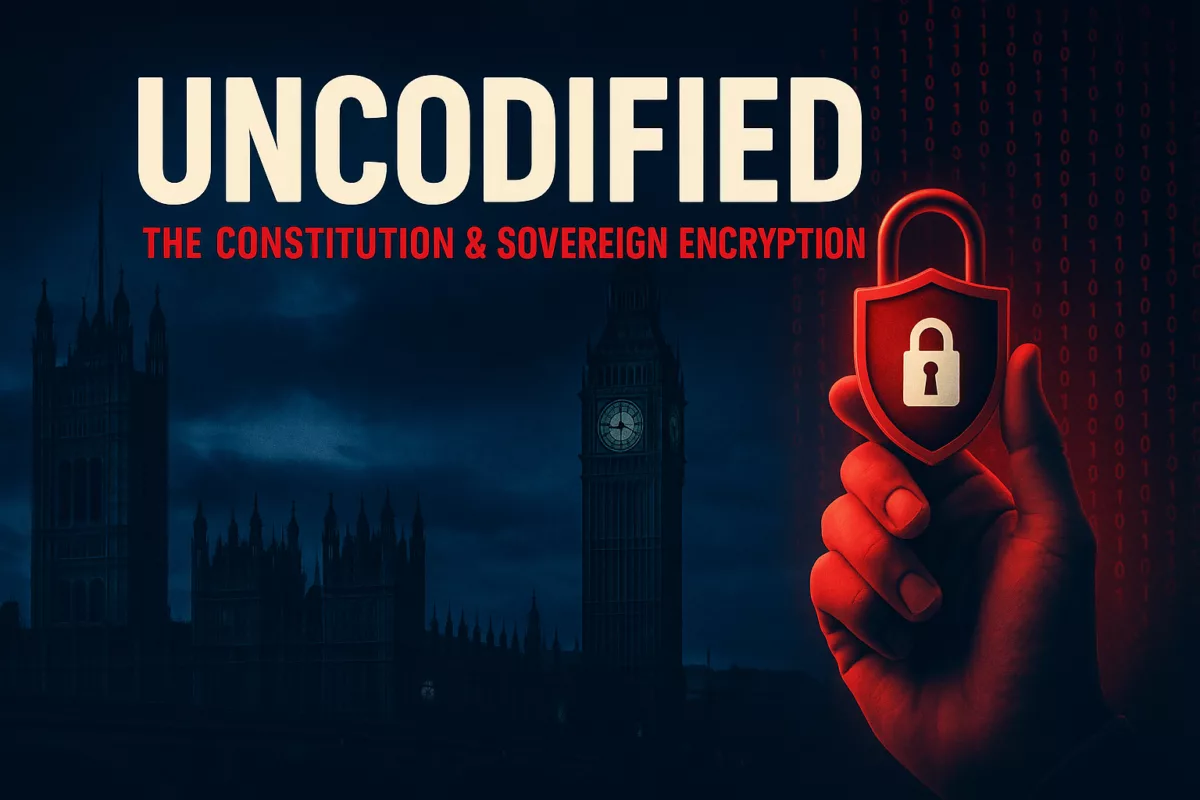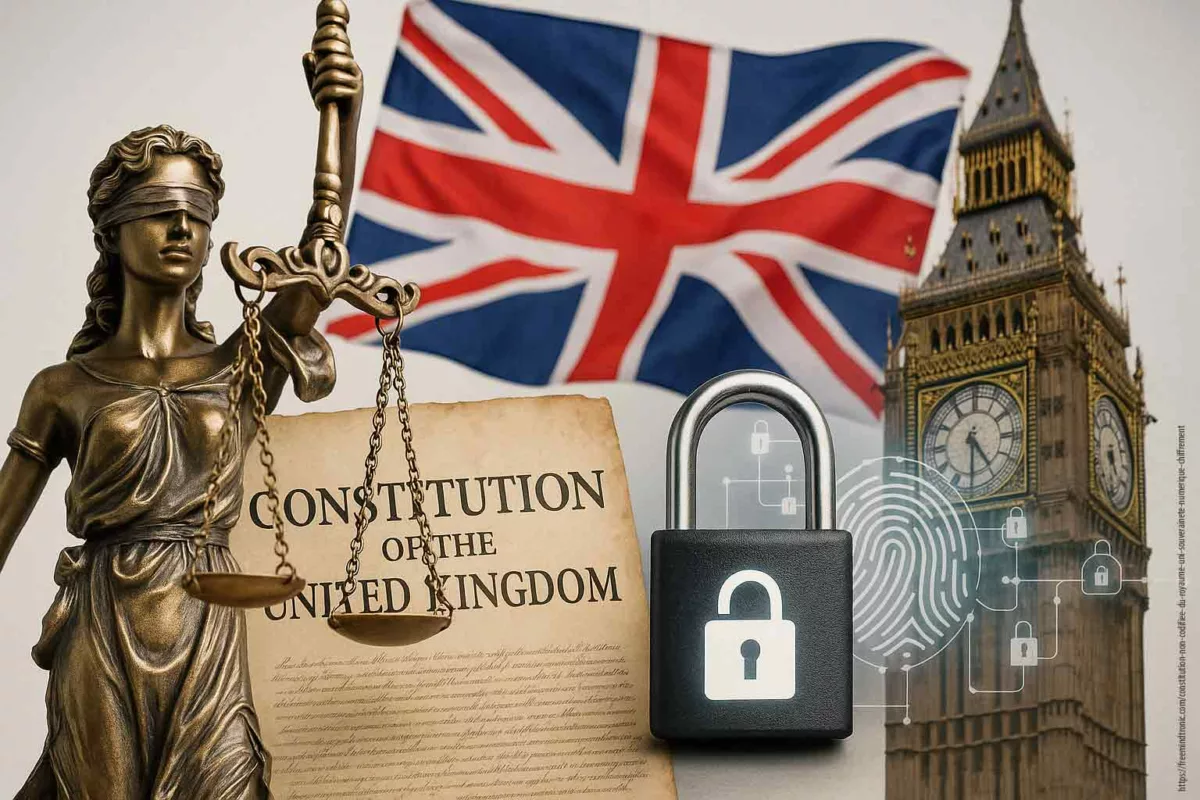Crypto Regulations Transform Europe’s Market
Crypto regulations are set to transform the European crypto market, enhancing security, transparency, and investor protection. Discover how these changes will impact crypto exchanges, service providers, and wallet users. Understand why Europe is leading the way in crypto regulation.
2025 Cyberculture
Constitution non codifiée du Royaume-Uni | souveraineté numérique & chiffrement
2025 Cyberculture EviLink
P2P WebRTC Secure Messaging — CryptPeer Direct Communication End to End Encryption
2025 Cyberculture Cybersecurity Digital Security EviLink
CryptPeer messagerie P2P WebRTC : appels directs chiffrés de bout en bout
2025 Cyberculture
Souveraineté individuelle numérique : fondements et tensions globales
2025 Cyberculture
Audit ANSSI Louvre – Failles critiques et réponse souveraine PassCypher
2025 Cyberculture
Sovereign Passwordless Authentication — Quantum-Resilient Security
Stay informed with our posts dedicated to Cyberculture to track its evolution through our regularly updated topics.
Crypto regulations in Europe will undergo a significant transformation with the introduction of the Markets in Crypto-Assets (MiCA) regulation. Adopted in 2024, MiCA aims to create a safer and more transparent environment for investors and crypto-asset users. Furthermore, it strengthens the oversight and regulation of crypto activities. Full implementation is expected by January 2025, with some provisions taking effect on June 30, 2024. You can find more information about the MiCA regulation here.
Crypto Regulations Effective Date and Application
MiCA officially came into force on June 30, 2024, as per publication number 2024/12345 in the Official Journal of the European Union. This marks the start of the phased application of various provisions. Key measures effective from this date include transparency obligations for crypto-asset issuers (Article 8) and market abuse prevention measures (Articles 89 and 90).
Other articles will become effective in January 2025. This allows businesses and regulators time to adapt to the new requirements. These articles cover anti-money laundering and counter-terrorism financing measures (Articles 58 and 59) and asset segregation obligations (Article 67).
MiCA’s Main Goals
MiCA primarily aims to protect crypto-asset holders and service clients. It applies to the issuance, public offering, and trading of crypto-assets, as well as associated services. Key measures include:
- Investor Protection: Crypto-asset issuers must publish a white paper detailing the assets’ characteristics and risks (Article 8). Misleading information can result in legal liability for damages.
- Market Abuse Prevention: Strict measures prevent insider trading, unlawful disclosure of insider information, and market manipulation (Articles 89 and 90).
- Service Provider Standards: Issuers must be legal entities, adhering to high standards of transparency and professionalism (Articles 4 and 5). They must also establish recovery plans and maintain sufficient reserves for their commitments.
Impact on Crypto Exchanges and Service Providers
Crypto exchanges and service providers must comply with new obligations, including:
- Asset Segregation: Client crypto-assets and funds must be kept separate from the company’s assets and cannot be used for its own account (Article 67).
- Anti-Money Laundering (AML) Measures: Providers must implement policies to prevent money laundering and terrorism financing, ensuring their systems are secure against cyberattacks (Articles 58 and 59).
- Clear and Honest Information: Providers must offer clear and transparent information to clients, warning them of risks and avoiding misleading claims about the benefits of crypto-assets (Articles 62 and 63).
Crypto Regulations Implications for Different Wallet Types
MiCA will also impact crypto-asset storage methods, including cold wallets and hardware wallets. It’s crucial to distinguish between these types:
Hardware Wallets for Transaction Signing
These devices, like Ledger, allow direct cryptographic transaction signing. They offer high security by keeping private keys offline and protecting against potential attacks. Examples include Trezor and KeepKey, which integrate hardware security modules for transaction signing and key protection.
MiCA’s Impact on Hardware Wallets:
- Enhanced Security: Hardware wallets must meet higher security standards to ensure private keys are protected against cyberattacks (Article 59).
- Increased Legal Responsibility: Manufacturers could be liable for security breaches or misleading information about the protection offered. They may need to compensate users for lost assets due to security failures (Article 75(8)).
- Transparency and Compliance: Manufacturers must provide clear, detailed information about their security protocols and associated risks, increasing transparency for users (Article 60).
Cold Wallets with Crypto-Asset Generation
These wallets secure seed phrases and private keys without enabling direct transaction signing. They are mainly used to check balances and securely store private keys. An example is the SeedNFC HSM by Fullsecure, designed by Freemindtronic. It creates Bitcoin or Ethereum wallets in one click, generating private keys and BIP39 seed phrases. This device operates offline, without servers, databases, or identifiers, and can autofill private or public key fields via a Freemindtronic extension or Bluetooth virtual keyboard. It does not support transaction signing, only balance checks. SeedNFC HSM is protected by two international patents covering wireless access control and segmented key authentication.
Why Cold Wallets Comply with MiCA:
- No Transaction Signing: Cold wallets like SeedNFC HSM don’t enable direct transaction signing. MiCA focuses on active services related to transactions and asset management, not passive storage and balance checking.
- Offline Security: These devices operate offline and are not connected to networks or servers, significantly reducing security and fraud risks MiCA aims to address for active services.
- Limited to Balance Checking: Since these cold wallets aren’t involved in active crypto-asset transmission or transaction services, they aren’t subject to the same regulatory obligations as crypto-asset service providers (CASPs) defined by MiCA.
Identity Disclosure Requirements for Hardware Wallets
Under MiCA and the Transfer of Funds Regulation (TFR), crypto service providers must capture identity information for senders and recipients of every transaction, regardless of amount (Articles 66 and 67). However, this primarily affects exchanges and centralized services, not hardware wallet manufacturers.
Historical Context and Motivation Crypto Regulations
MiCA Crypto Regulations was developed in response to the rapid growth of the crypto-asset market and the lack of a unified regulatory framework in Europe. Legislators recognized the need to protect consumers, prevent fraud, and promote innovation in a secure environment.
Crypto Regulations Global Perspectives
MiCA’s influence extends beyond Europe. It could serve as a model for other jurisdictions worldwide. Regions like the US and Asia might follow suit and implement similar regulations.
Challenges and Opportunities
Challenges for Businesses
MiCA presents significant challenges for crypto businesses, especially regarding compliance costs and administrative complexity. Companies need to upgrade security systems, strengthen internal protocols, and train staff to meet new legal standards. This could lead to substantial expenses, particularly for small and medium-sized enterprises.
Opportunities for Innovation
Despite these challenges, MiCA offers opportunities for innovation and growth in the European crypto market. Companies that comply with MiCA standards might gain greater investor trust and expanded market access. The regulation could also encourage the adoption of new technologies and practices, enhancing the competitiveness of the European crypto sector.
Future Steps and Evolutions
Next Steps
MiCA’s implementation includes multiple consultations and phases. These stages and their associated timelines are crucial for businesses’ preparation. The European Commission will continue working with national regulators to ensure a smooth and effective implementation of the new rules.
Potential Evolutions
MiCA might evolve to cover new areas like decentralized finance (DeFi), NFTs, and crypto lending and borrowing. These sectors are currently monitored and could be regulated in the future to ensure they adhere to high standards of transparency and security.
Expert Opinions
Including quotes or perspectives from industry experts, legislators, or crypto business representatives on MiCA’s impact can enrich the article. For instance, French Finance Minister Bruno Le Maire called MiCA a “milestone” that will end the “Wild West of cryptocurrencies”. Binance CEO Changpeng Zhao praised the “clear rules of the game” MiCA provides for crypto exchanges.
Industry Reactions
Detailing industry reactions to MiCA’s adoption, including approvals and criticisms, can illustrate the overall reception of the regulation. Some companies have welcomed the legal clarity and security MiCA provides, while others have raised concerns about compliance costs and new administrative requirements.
Practical Examples
Compliance Examples
Presenting concrete examples of how crypto companies are preparing to comply with MiCA can be insightful. For example, companies like Ledger and Trezor might enhance their security protocols and update their transparency practices to meet MiCA’s new requirements.
Conclusion
MiCA’s implementation is a crucial step toward establishing a coherent regulatory framework across Europe. It aims to foster trust and security in the crypto-asset market. This could also position Europe as a leader in crypto regulation, setting a model for other regions.
In conclusion, these new rules strive to balance innovation and security, protecting users while enabling the crypto sector’s development under stringent and transparent oversight.








